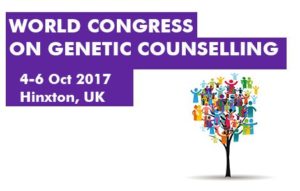| Title: | P14.075C – Automated patient matching from facial photos – initial feasibility study Automated patient matching from facial photos – initial feasibility study |
| Keywords: | photos; facial |
| Authors: | N. Ekhilevitch1,2, T. Hershkovitz1, A. Kurolap2, M. Steinberg1, H. N.Baris1,2, N. Fleischer3;1The Genetics Institute, Rambam Health Care Campus, Haifa, Israel, 2The Ruth and Bruce Rappaport Faculty of Medicine, Technion-Israel Institute of Technology, Haifa, Israel, 3FDNA Inc., Boston, MA, United States. |
| Abstract: | Introduction: The importance of matching patients for diagnosis and gene discovery necessitates connecting clinicians and researchers from around the world. This is an initial feasibility study to assess if the automated facial recognition technology is able to provide connections between undiagnosed patients with similar facial phenotype.
Methods: We composed a survey of 53 pairs of possibly matching facial photos of diagnosed, undiagnosed, and control patients, asked four geneticists to rate the similarity between each pair, and compared their results to the Patient Matching technology of the Facial Dysmorphology Novel Analysis (FDNA) algorithm. We used the Pearson Correlation coefficient and the area under the curve (AUC) of the ROC curve to assess correlations. Results: Of the diagnosed pairs, the phenotype comparison performance of the FDNA technology (3.6 on similar pairs, 3.25 on different pairs) and the geneticists (2.5 on similar pairs, 2.25 on different pairs) was comparable, with a slight advantage to the technology. This trend is also seen by AUC: 0.65 for the technology vs. AUC 0.51 for the mean of the clinician’s answers. The overall agreement level between the four geneticists is relatively low (mean correlation 0.52). Conclusions: The importance of the task and the comparable results is a strong motivator to continue with a second stage of a feasibility study, with more photos, more clinicians, and without the intrinsic biases – the familiarity of geneticists with the patients. Future applications of this technology could complement next-generation sequencing in undiagnosed patients and lead to the discovery of rare novel syndromes |
| Presentation Time: | Monday, May 29, 2017, 10:15 AM -11:15 AM |

FDNA and Face2Gene Featured at ESHG
A flock of researchers from around the globe shared their findings in dysmorphology and molecular genetics at this year’s ESHG as a part of FDNA’s corporate satellite talk and various scientific posters. Karin Weiss (Rambam Health Care Campus, Haifa, Israel) presented her further work on Sifrim Hitz Weiss Syndrome (SIHIWES), a recently described form […]


